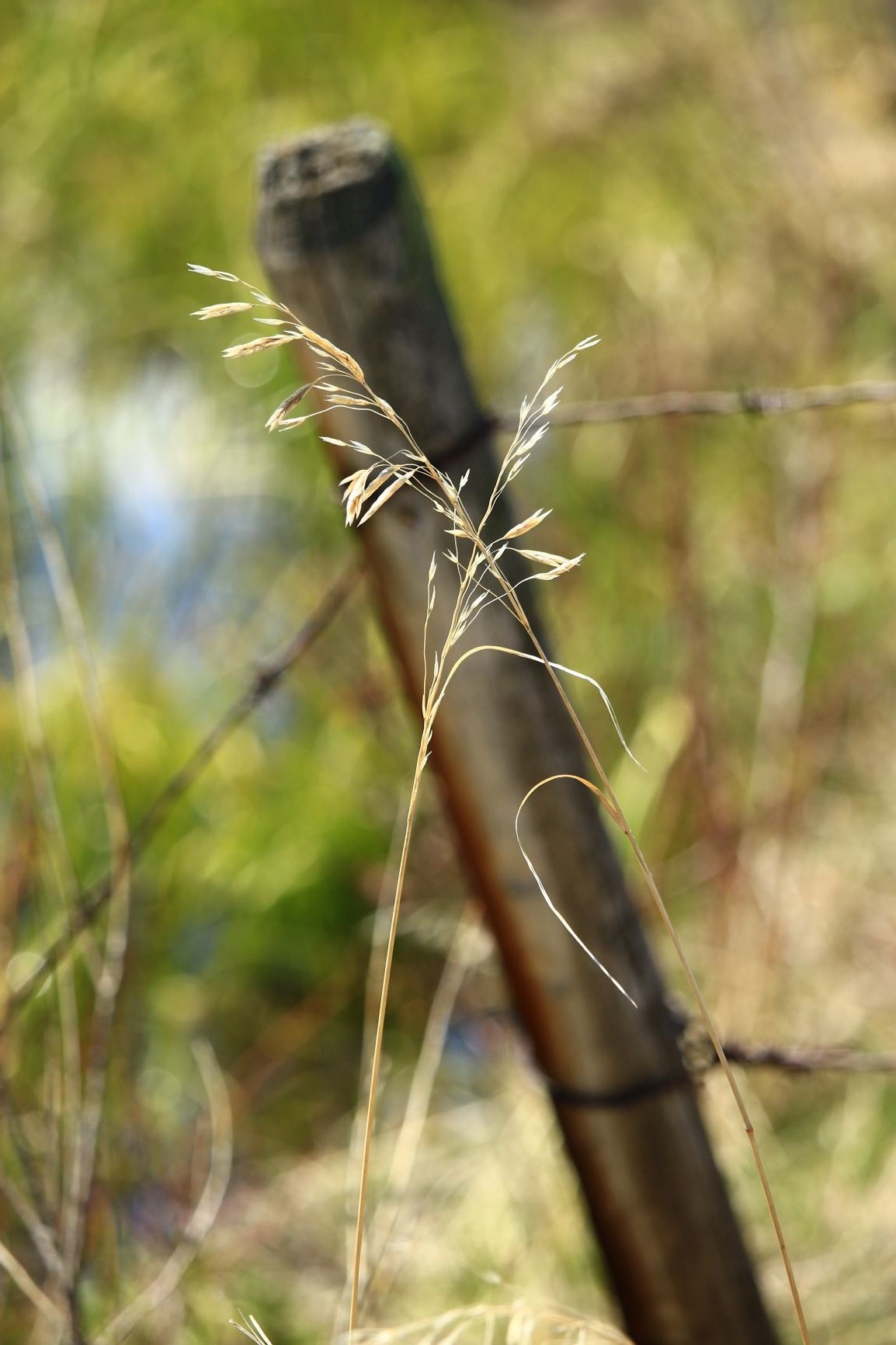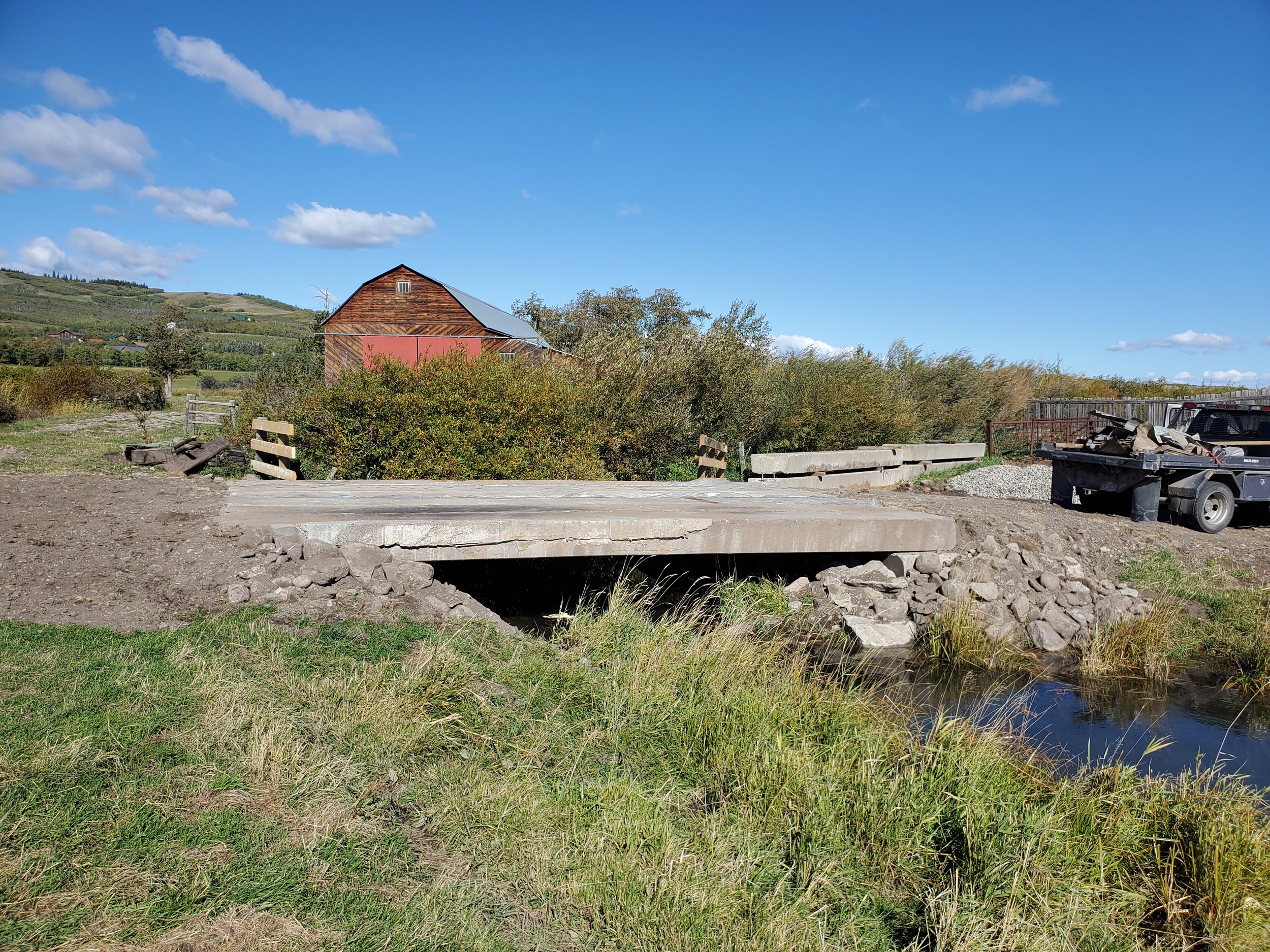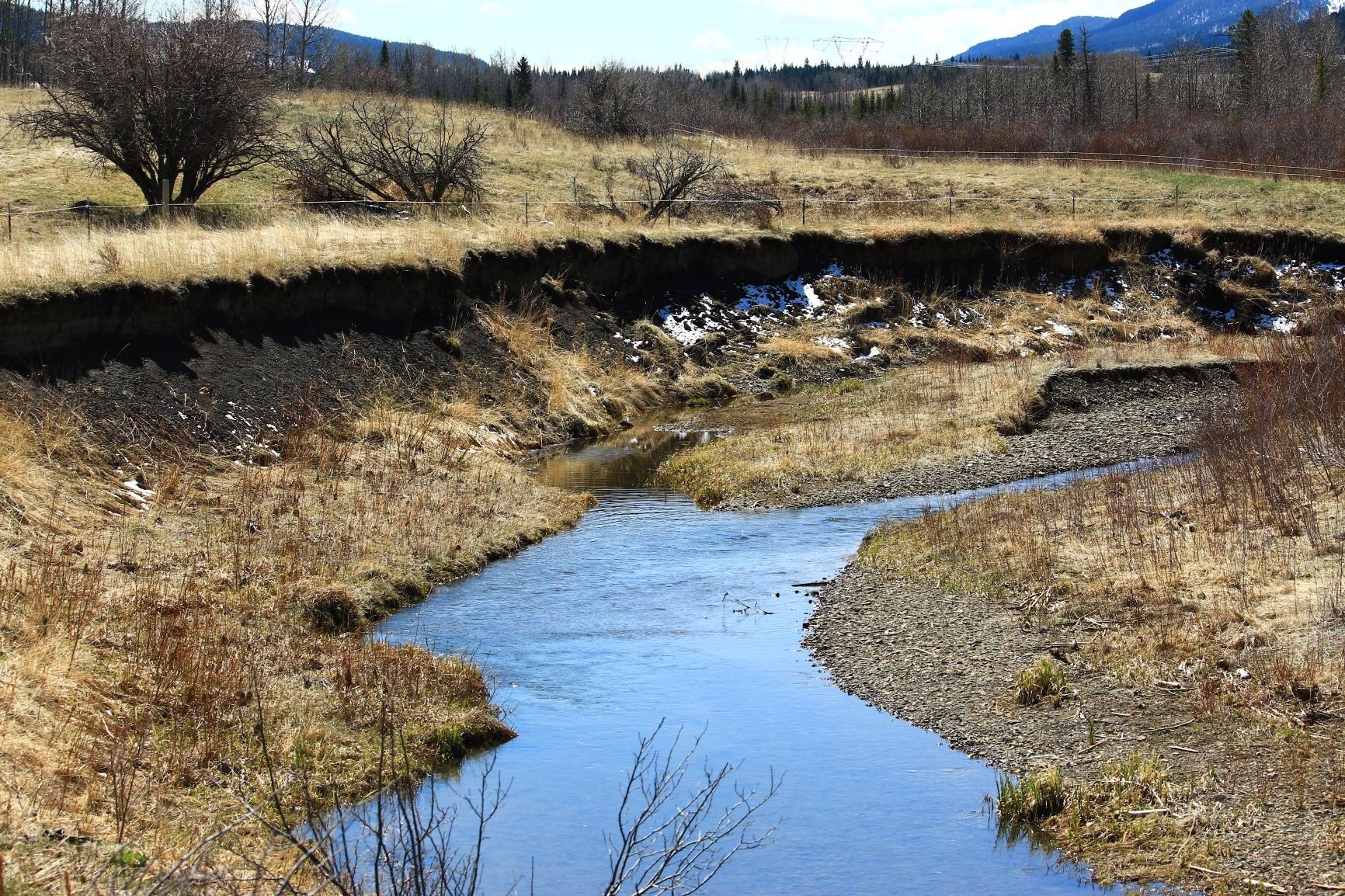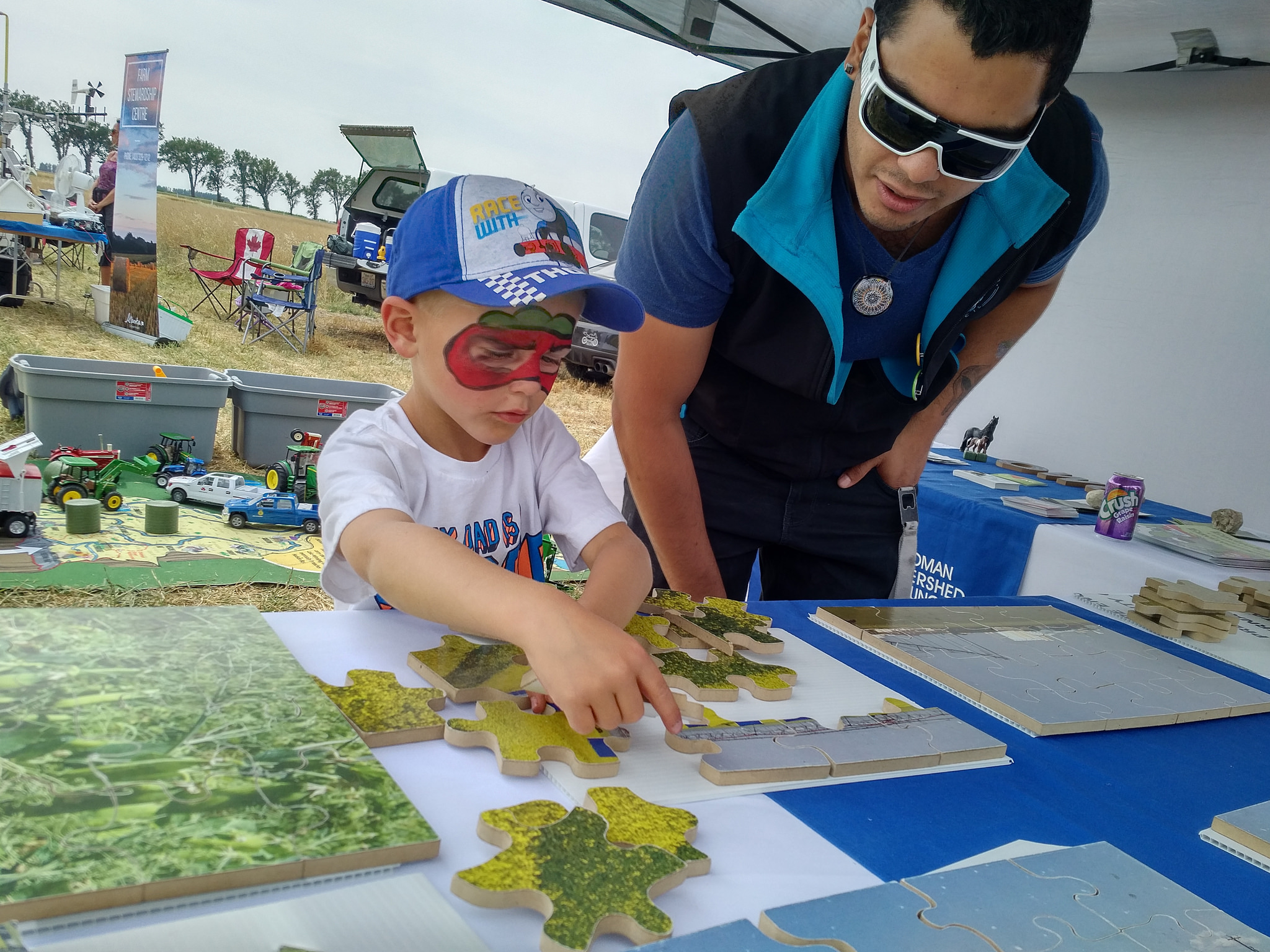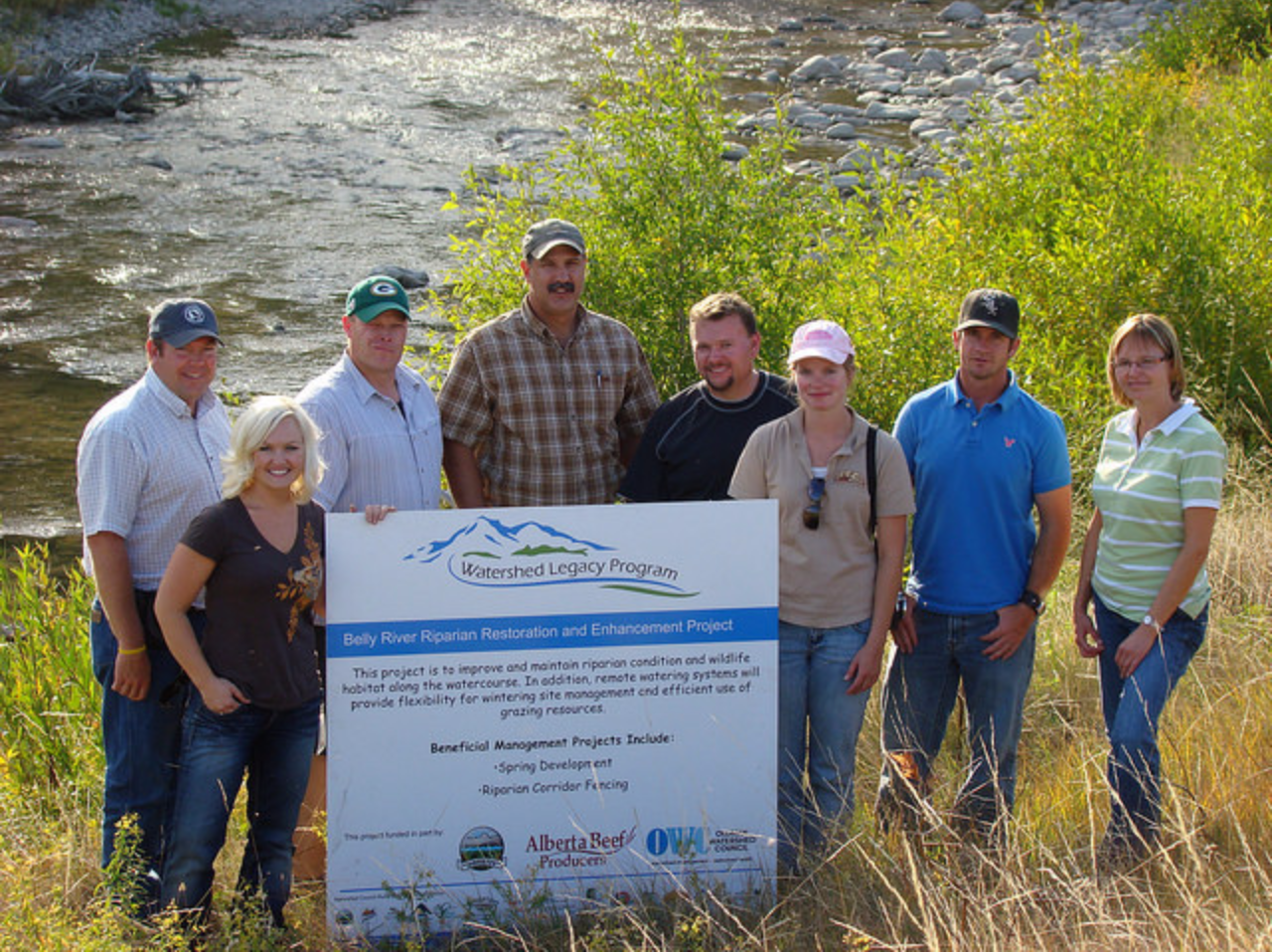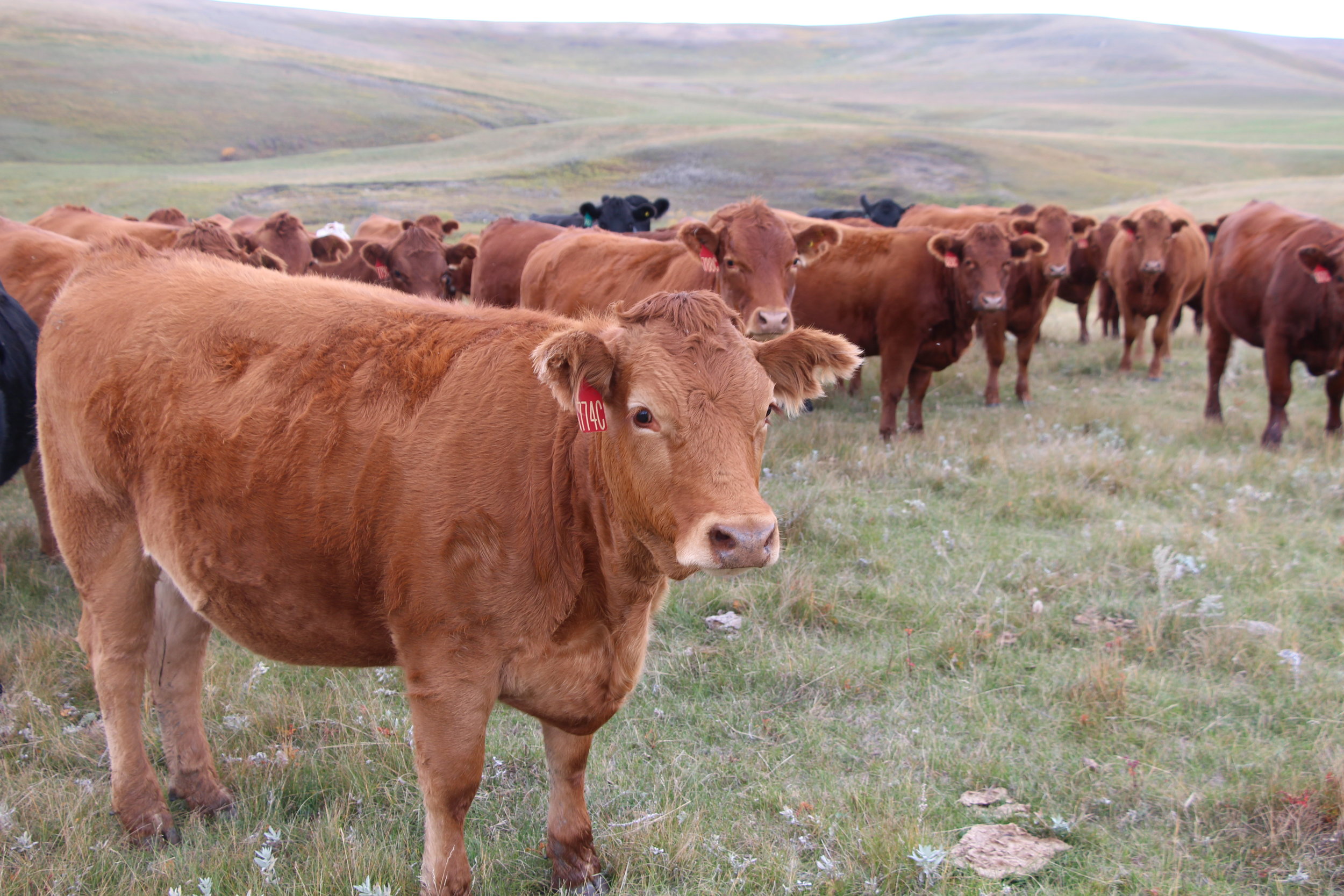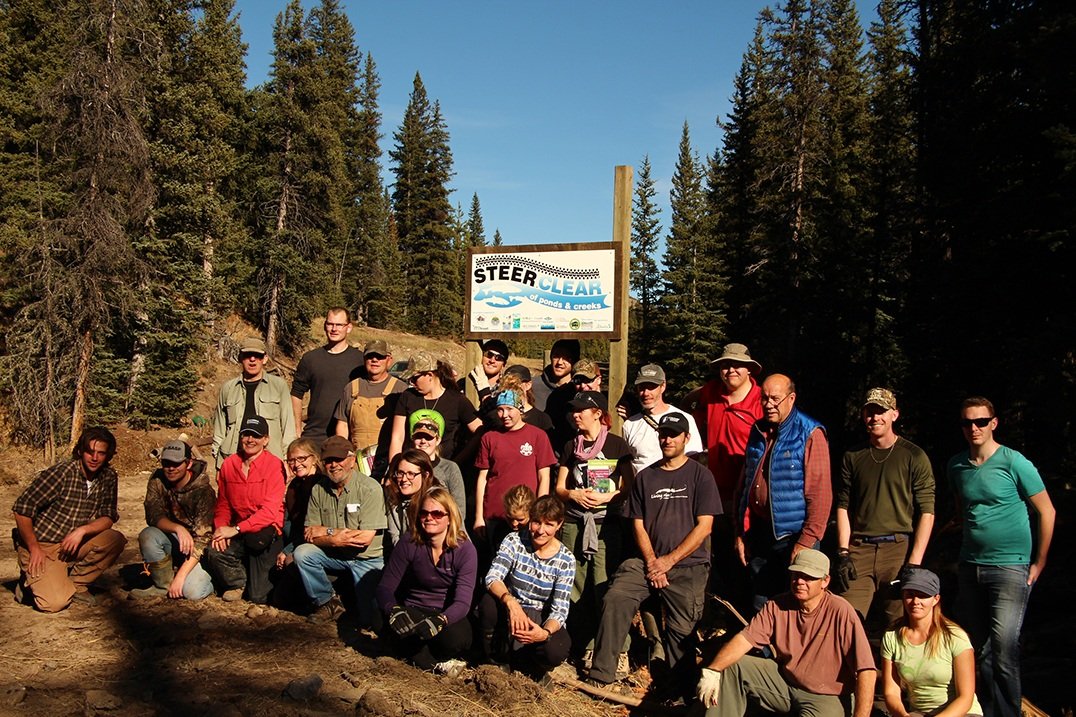Overview
Healthy grasslands, wetlands, and shorelines are critical to maintain water security and a resilient watershed that is able to withstand floods and droughts. The Oldman Watershed Council (OWC) implements natural infrastructure projects to restore these important areas that improve water quality and support pollinators and native plant species. The OWC also funds sustainable land management projects through our Watershed Legacy Program to improve the health of our watershed.
what’s being done
Restoring Natural Infrastructure
Investing in natural infrastructure improves water and drought security and the health of the watershed. Planting willow trees along streambanks traps sediment, slows water velocity, and reinforces the soil — helping to stabilize streambanks affected by scouring and erosion. These restored areas provide millions of dollars in essential services, like flood protection and water storage during drought, and contribute to the economy: a 2023 study showed Alberta’s natural infrastructure sector directly employed over 21,000 Albertans and directly contributed $2.9B to the provincial economy in 2021.
The OWC plants willows and other native species and installs wattle fencing to restore streambanks. We also install beaver dam analogues and erosion control structures, and work with landowners to restore shorelines and riparian zones. Showcasing restoration techniques and expanding public knowledge of drought resiliency help to build community capacity and responsible stewardship.
Grasslands are also vital to watershed integrity and biodiversity. Overgrazing and multi-year droughts have left some grasslands in poor condition, but thanks to the hard work of land managers, they are being given a chance to recover. The OWC supports Indigenous land managers by investing in projects that restore parched grasslands. At Naapi’s Garden and the Katoyiss Seed Bank, more than 3,000 native prairie plants that are critical to Blackfoot culture have been reestablished. (Read more about Indigenous partnerships here.) The OWC is also working to convert a 28‑hectare crested‑wheatgrass field back to native prairie by undertaking a range‑health assessment and invasive species treatment, and prescribing a native grass seed mix.
Four native bumblebee species — Gypsy Cuckoo, Western, Yellow-banded, and Suckley’s Cuckoo — are in rapid decline. Restoring grasslands and increasing native‑plant diversity are critical to their survival. The OWC installs native pollinator gardens each year in Kainai and Piikani Nations, Claresholm (designated critical habitat in 2022), and Lethbridge. Public education on pollinators and prairie plants is done through outreach, presentations, and hosting bioblitz days to observe and count native species.
Watershed Legacy Program
The Oldman watershed has some of the most productive farmland and ranchland in the world. Through the Watershed Legacy Program, OWC works directly with rural stakeholders and provides funds, tools, and technical assistance necessary to take steps toward sustainable land management. By coordinating efforts throughout the basin, this program aims to improve water quality and conserve and enhance our natural assets and the rural way of life.
Landowners and watershed stewardship groups can apply for funding for projects that focus on riparian, creek, and wetland restoration, pollinator habitat, beneficial management practices, and other projects that improve land management and water quality.
The Watershed Legacy Program funds projects fifty-fifty: OWC pays for one half while the individual or group pays for the other half, either through their own funds, time volunteered, or funding provided by other organizations. The OWC can help with identifying and prioritizing areas and resources required to maintain a healthy, intact, and local watershed. We also can provide technical assistance from agricultural specialists for projects when required.
Participants of the program submit a final report after their project is finished to communicate what has been learned, the challenges, and the opportunities so that future projects can succeed. Follow-up and monitoring are also crucial.
Applications are open to individual producers, watershed groups, and other groups. The application process is open anytime throughout the year. Download the application form here.
If you have a watershed stewardship project idea or questions about the program, please submit an application or get in touch with OWC’s Restoration Manager, Debra Still, by phone (403-330-1346 x 7) or email (deb@oldmanwatershed.ca).
Don’t have a project in mind, but want to support this program? Donate to the Restoration / Watershed Legacy Program fund, or volunteer with a specific project. With strong partnerships and financial resources, we can achieve long-term health in our watershed and continue the tradition of stewardship.
Further Reading & Funding Resources
SUPPORTERS, FUNDERS, & PARTNERS
This work is possible thanks to the generous support of our funders: the Government of Canada — Two Billion Trees Program, Habitat Stewardship Program, and EcoAction Program; the Government of Alberta Watershed Resiliency and Restoration Program; Alberta Ecotrust Foundation; Calgary Foundation; and the Hanen Society.


